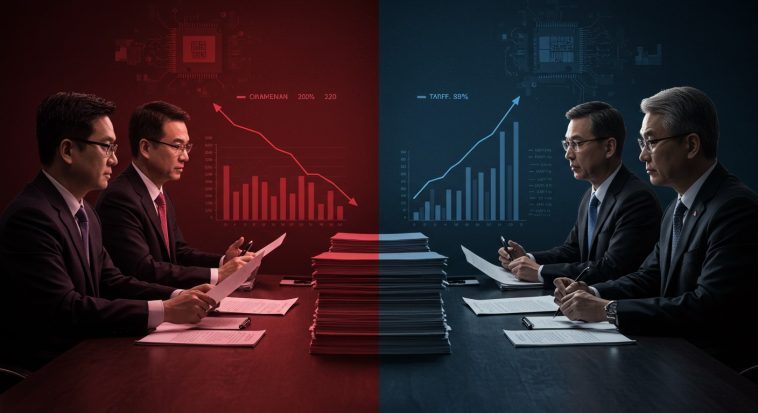Trade Negotiations with China Become Critical as Tariffs Escalate
Trade negotiations with China have become a focal point of economic discussions as the country expressed conditional openness to talks with the US on Wednesday. This development comes even as the White House clarified that “China now faces up to a 245% tariff on imports to the United States,” underscoring the intensity of current trade negotiations with China.
US financial markets responded negatively to the news, particularly after semiconductor companies reported concerning trade-related developments. The ongoing trade tensions between the world’s two largest economies continue to shape global economic outlooks.
China’s Conditions for Trade Negotiations
Michelle Lam, Greater China economist at Societe Generale SA, explained to Bloomberg that Beijing seeks “respect, consistency and a point person” as trade negotiations with China gain renewed attention. Chinese state media emphasized that China would disregard the “numbers game” of escalating duties, suggesting a strategic approach to the heightened tariff situation.
Semiconductor Industry Faces Immediate Impact
The semiconductor sector is experiencing direct consequences from the intensifying trade negotiations with China. ASML spooked investors on Wednesday with weaker-than-expected orders and uncertainty regarding the impact of new US tariffs on its business operations.
Similarly, Nvidia stock declined after the AI chipmaker disclosed a projected $5.5 billion loss resulting from the US government’s unexpected new controls on semiconductor exports to China. These developments highlight how trade tensions are already affecting global firms significantly, with ripple effects likely to impact chip earnings and China’s technological advancement plans.
Treasury Secretary’s Outlook on Trade Negotiations
US Treasury Secretary Scott Bessent expressed optimism to Yahoo Finance about achieving “clarity” on tariffs and making progress on key trade agreements within the next 90 days. This timeline aligns with President Trump’s efforts to increase pressure on China to engage in meaningful trade negotiations with China.
“Let’s set aside China. There are 15 large trading partners. We set aside China,” Bessent told Yahoo Finance Executive Editor Brian Sozzi. “There are 14, and we’re in rapid motion and setting up a process for the 14 largest trading partners.”
Strategic Pause and Escalation in Trade Negotiations with China
The Trump administration has instituted a broad 90-day pause on steep “Liberation Day” tariffs, creating a window for negotiators to develop new trade agreements. Meanwhile, trade tensions between the United States and China have intensified significantly. China increased duties on US imports to 125% from 84%, while US tariffs on Chinese imports have expanded to “a 125% reciprocal tariff, a 20% tariff to address the fentanyl crisis, and Section 301 tariffs on specific goods, between 7.5% and 100%.”
Investor Focus and Future of Trade Negotiations
Investors are closely monitoring potential delays and exemptions to Trump’s comprehensive tariff plans. The President has indicated a possible delay to automotive tariffs, providing some market relief after suspending levies on certain consumer technology products. However, he maintains that these tariffs will eventually be implemented.
In a significant move on Monday, the Trump administration initiated an investigation through the Commerce Department regarding semiconductor and drug imports. This action is widely viewed as a preliminary step toward implementing tariffs in these sectors, further complicating the landscape for trade negotiations with China.
The baseline 10% tariff that became effective on April 5 remains in place for all affected imports into the United States as trade negotiations with China continue to evolve.



